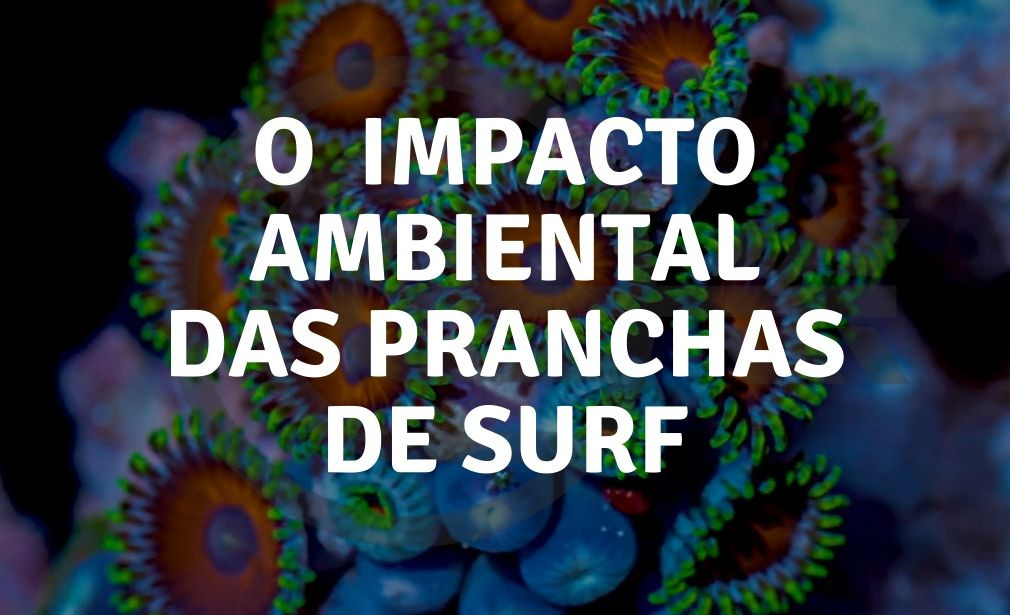Jan 9, 2020 Paulownia - “A Árvore do Futuro”
Surfboards and their hidden environmental impacts
Within a universe of infinite possibilities for practice surfing, we have a group of surfboards that make up the main choices of the surfer, when it comes to purchasing a new board. There are many variations, modifications, however we will classify into 3 major groups for easy understanding:
· Soft boards
· Conventional Boards - Foam Core
· Wooden boards
The surfer, in direct contact with nature, have the mission to preserve as much as possible our biosphere, especially the sea and the beaches, which is where the surfer lives his magic moment.
However, the practice of surfing still depends heavily on petroleum-based equipment, which is difficult (or even impossible) to dispose / recycle. It is estimated that 80% of surf equipment comes from the petrochemical industry. But what's the harm in that? What are the impacts on nature and our future?
Harmful Waste Generation
First, petroleum derivatives are substances that must go thru numerous chemical processes and temperature rises, to transform the fraction extracted from petroleum into the final product. Although, during chemical reactions, hazardous waste generation occurs, which if not perfectly disposed, pollutes the ecosystem, and also put our health at risk.
Excessive CO2 Generation
Another important point is the carbon footprints. Self-explanatory, Carbon Footprints are the carbon dioxide (CO2) traces left over the entire life cycle of a given product. This CO2 can be generated through the burning of fossil fuels, production and consumption of products, transportation, among other services.
In the case of surfboards, a lot of energy is spent from extracting oil from the ground to obtaining the final product. And for the generation of this energy that will fuel the numerous processes (chemical, mechanical, thermal), more fossil fuels are burned, and consequently more CO2 is generated.
Besides burning, CO2 also comes as a product of many chemical reactions. So we have massive CO2 generation from countless sources!
A master's thesis by Tobias C. Schultz, University of Berkeley, California estimated that the amount of CO2 released in the production of surfboards in the US (6'0 - 2.5kg) can range from 170kg to 250kg in CO2 emissions throughout it`s process!
To make a comparison of how much a tree can absorb from CO2 (in an attempt to offset the excesses of its generation): “A study by the Totum Institute and the Luiz de Queiroz College of Agriculture (ESALQ), University of São Paulo in partnership with the SOS Mata Atlântica Foundation, estimates that each Mata Atlântica tree absorbs 163.14 kg of carbon dioxide equivalent (CO2) over its first 20 years. ”
So, you can see that on average, a 20 year old tree of "Mata Atlântica" forest is still unable to absorb all the CO2 generated by just 1 surfboard!
Difficulties in Disposal, Reuse and Recycling
In Brazil, as in the rest of the planet, it is known that the disposal and recycling are subjects of frequent discussion. In fact, it is very simple to discard a surfboard in the trashcan and imagine that it will all be fully recycled and/or reused. But in practice, this is not what happens.
“Discarding a surfboard in ordinary trash is not a good solution, considering that, in Brazil by itself, the surf industry moves around 1.6 billion a year and produces about 50,000 surfboards in the same period (according to the study by Grijó and Brügger) ”
“Unfortunately, there is still no correct disposal alternative for large-scale surfboards that is easily accessible to surfers from all over the world. The most viable alternative to damage the environment as little as possible is to dispose a surfboard in industrial landfills or in hazardous waste-specific landfills and therefore avoid any contamination. ”
eCycle
Be part of the change
Surfboards are generally still an ecologically hostile product made of unsustainable materials and practices. It's almost unfair that surfers complain about the health of the oceans they love so much, when they contribute to their pollution every time they buy a new surfboard!
Not to mention that the reuse / recycling of conventional surfboards is not yet accessible to the vast majority. The least harmful option would be to dispose your boards in special landfills - and of course, avoid promoting the industry as much as possible!
When purchasing a new board, try to keep in mind all the processes that have been done until you reach the product in your hands. This is a healthy practice and not just for surfboards!
Design Life Cycle has suggested as a sustainable alternative, the use of surfboards made from old hollow wood construction methods, which are being studied and refined by a few shapers and engineers around the planet.
Our biggest challenge is to bring the technology of this process closer to the technology of high performance surfboards, maintaining it accessible to the surfer.
Always choose for sustainable raw material products, make a difference to the world, start the change by yourself!
Bibliography
http://www.designlife-cycle.com/surfboards/
http://www.eps.co.uk/pdfs/eps_and_the_environment.pdf
http://citeseerx.ist.psu.edu/viewdoc/download?doi=10.1.1.605.1046&rep=rep1&type=pdf

